
Space Shuttle Challenger Accident NASA – FBI- CIA – DOD
$19.50
Description
Challenger Disaster: Timeline
Timeline of Main Events:
- July 1982: Space Shuttle Challenger joins NASA’s fleet of reusable winged spaceships.
- Prior to January 28, 1986: Space Shuttle Challenger flies nine successful missions.
- Lead-up to STS Mission 51-L:President Ronald Reagan announces a program to send a civilian, specifically a teacher, into space to build public support for NASA.
- More than eleven thousand teachers apply for the program.
- Christa McAuliffe, a high school teacher from Concord, New Hampshire, is selected as the Teacher in Space Participant for STS Mission 51-L.
- STS Mission 51-L is scheduled to deploy the Spartan-Halley comet research observatory and a tracking and data relay satellite.
- Internal concerns and objections regarding the design of the Solid Rocket Booster (SRB) joints, particularly the O-ring seals, are raised within NASA, as evidenced by memos and documents.
- Experiences with O-ring erosion on previous missions, such as STS 41-B, raise concerns about leak check procedures potentially exacerbating the issue.
- Ice is observed on the STS 51-L launch complex prior to launch.
- January 28, 1986:T-2:05: The Challenger operational recorder is automatically activated, capturing crew comments.
- Launch: Space Shuttle Challenger launches on STS Mission 51-L.
- T+73 seconds: A failure in the joint between the two lower segments of the right Solid Rocket Motor occurs. The hot gases leak through the damaged O-ring seals.
- T+73 seconds: The Space Shuttle Challenger breaks apart. Loss of signal and all data occurs. The seven-member crew is lost.
- Immediately After the Disaster: Views inside Mission Control show Flight Directors reacting to the anomaly.
- The Federal Bureau of Investigation (FBI) initiates an investigation to determine if sabotage was involved.
- February – August 1986: The U.S. Navy conducts a major salvage operation to recover wreckage of the Space Shuttle Challenger.
- February 1986: The Congress of the United States Congressional Budget Office issues a report on the “Budget Effects of the Challenger Accident.”
- February 18, June 10, and 17, 1986: The U.S. Senate Committee on Commerce, Science and Transportation, Subcommittee on Science, Technology and Space holds hearings on the Space Shuttle Accident and the Rogers Commission Report.
- May 15, 1986: The U.S. House Committee on Science and Technology, Subcommittee on Space Science and Applications holds a hearing on the “Strategy for Safely Returning Space Shuttle to Flight Status.”
- June 6, 1986: The Presidential Commission on the Space Shuttle Challenger Accident, also known as the Rogers Commission, releases its combined report. The report concludes that the cause of the accident was the failure of the O-ring seals in the right Solid Rocket Motor joint, exacerbated by cold weather and flaws in NASA’s decision-making processes.
- June 10, 11, 12, 17, 18, 25, 1986: The U.S. House Committee on Science and Technology holds hearings on the “Investigation of the Challenger Accident,” Volume 1.
- July 14, 1986: NASA releases a 55-page report detailing “NASA Report Actions to Implement the Recommendations of The Presidential Commission on the Space Shuttle Challenger Accident.”
- July 15, 16, 23, 24, 1986: The U.S. House Committee on Science and Technology holds hearings on the “Investigation of the Challenger Accident,” Volume 2.
- October 29, 1986: The U.S. House Committee on Science and Technology releases its report on the “Investigation of the Challenger Accident.”
- February 26, 1987: The U.S. House Committee on Science, Space and Technology holds a hearing on “NASA’s Response to the Committee’s Investigation of the ‘Challenger’ Accident.”
- June 1987: The Presidential Commission on the Space Shuttle Challenger Accident releases a “Report to the President Implementation of the Recommendations of the Presidential Commission on the Space Shuttle Challenger Accident.”
- January 22, 1987: The U.S. Senate Committee on Commerce, Science and Transportation, Subcommittee on Science, Technology and Space holds a hearing on “Space Shuttle Oversight,” focusing on NASA’s redesign activities.
Cast of Characters:
- Dick Scobee: Commander of the STS Mission 51-L crew.
- Mike Smith: Pilot of the STS Mission 51-L crew.
- Ron McNair: Mission Specialist 1 on the STS Mission 51-L crew.
- Ellison S. Onizuka: Mission Specialist 2 on the STS Mission 51-L crew.
- Judy Resnik: Mission Specialist 3 on the STS Mission 51-L crew.
- Greg Jarvis: Payload Specialist 1 on the STS Mission 51-L crew.
- Sharon Christa McAuliffe: Payload Specialist 2 on the STS Mission 51-L crew, participating in the Teacher in Space Program. She was a high school teacher from Concord, New Hampshire, selected to be the first private citizen in space.
- Ronald Reagan: President of the United States at the time of the Challenger disaster. He announced the Teacher in Space program and addressed the nation after the accident.
- Rogers Commission: The Presidential Commission on the Space Shuttle Challenger Accident, appointed by President Reagan to investigate the disaster.
- Richard Phillips Feynman: An American theoretical physicist and Nobel laureate who served on the Rogers Commission. He authored a minority report that strongly criticized NASA’s organizational culture.
- Jay H. Greene: Flight Director in Mission Control during the STS 51-L launch.
- Alan L. (Lee): Another Flight Director in Mission Control during the STS 51-L launch.
- John Roberts: Counsel to President Reagan, who maintained a subject file on the Challenger Shuttle.
- Peggy Noonan: Worked on President Reagan’s address to the nation after the Challenger disaster.
- Leon Ray: Author of an early memorandum that strongly questioned the clevis joint design of the Solid Rocket Boosters.
- John Q. Miller: Author of an internal Marshall Space Flight Center note expressing concern about the O-ring seals and leak check procedures following the STS 41-B mission.
Space Shuttle Challenger Accident NASA – FBI- CIA – DOD – Congressional – White House Files & Photos
10,505 pages of material from NASA, the FBI, CIA, Rogers Commission, U.S. Congress, Department of Defense and the White House, related to the Space Shuttle Challenger Accident. Materials consist of reports, memos, letters, photographs, diagrams, charts, handwritten notes and more.
Space Shuttle Challenger, named after an American Naval research vessel, that sailed the Atlantic and Pacific oceans during the 1870s, joined NASA’s fleet of reusable winged spaceships in July 1982. It flew nine successful missions. Space Shuttle Challenger’s tenth mission, STS Mission 51-L ended on January 28, 1986. The craft and its seven-member crew were lost, 73 seconds after launch, when a booster rocket failure resulted in the breakup of the vehicle. The lost crew consisted of Commander Dick Scobee, Pilot Mike Smith, Mission specialist Ron McNair, Mission specialist Ellison S. Onizuka, Mission Specialist Judy Resnik, Payload Specialist Greg Jarvis, and Teacher in Space Participant Sharon Christa McAuliffe.
This Shuttle mission received greater attention, especially in American schools, due to the fact that a Concord, New Hampshire schoolteacher, Christa McAuliffe was onboard. The launch of a high school teacher as America’s first private citizen to fly aboard the Shuttle in NASA’s Space Flight Participant Program was promised to open a new chapter in space travel. NASA had proposed sending a civilian into space to build broader public support for the program, and when President Ronald Reagan announced that he wanted a teacher for the mission, more than eleven thousand applied. The shuttle mission was scheduled to deploy both the Spartan-Halley comet research observatory and a tracking and data relay satellite to provide high-capacity communications and data links.
The consensus of the commission appointed to investigate the accident and participating investigative agencies, is that the loss of the Space Shuttle Challenger was caused by a failure in the joint between the two lower segments of the right Solid Rocket Motor. The specific failure was the destruction of the seals that were intended to prevent hot gases from leaking through the joint during the propellant burn of the rocket motor.
This collection includes:
ROGERS REPORT – PRESIDENTIAL COMMISSION ON THE SPACE SHUTTLE CHALLENGER ACCIDENT WITH SUPPORTING MATERIAL – HYPERTEXT
Combined Report of The Presidential Commission on the Space Shuttle Challenger Accident June 6th, 1986 and Report to the President Implementation of the Recommendations of the Presidential Commission on the Space Shuttle Challenger Accident June 1987, with self-contained access to supporting material.
5,571 pages of searchable text, photos, documents, charts, diagrams, flowcharts, transcripts, handwritten notes, and other material gathered and produced by the Presidential Commission on the Space Shuttle Challenger Accident, also known as the Rogers Commission. Following the Challenger disaster, President Ronald Reagan signed an executive order creating the Rogers Commission to investigate the accident. The Commission construed its mandate somewhat broadly to include recommendations on safety matters not necessarily involved in this accident, but which it thought required attention to make future flights safer.
Major areas of coverage in the Rogers Commission Report include: Events leading up to the Challenger Mission; The accident; Causes of the accident; Space Shuttle’s Solid Rocket Booster faulty design; documents and memoranda raising design objections and more.
RICHARD FEYNMAN ROGERS COMMISSION MINORITY REPORT
Text of Appendix F – Personal observations on the reliability of the Shuttle by R. P. Feynman. Richard Phillips Feynman (1918 – 1988) was an American theoretical physicist, known for his work in the path integral formulation of quantum mechanics, the theory of quantum electrodynamics, and the physics of the superfluidity of supercooled liquid helium, as well as in particle physics for which he proposed the parton model. For contributions to the development of quantum electrodynamics, Feynman received the Nobel Prize in Physics in 1965 jointly with Julian Schwinger and Shin’ichiro Tomonaga. As a member of the Roger Commission he strongly blamed the culture at NASA for the accident. His conclusions about blamed differed from the consensus of the Committee members.
NATIONAL AERONAUTICS AND SPACE ADMINISTRATION (NASA) PHOTOGRAPHS
230 pictures taken by NASA photographers at the Johnson Space Center and the Kennedy Space Center, related to the Space Shuttle Challenger accident. Subject matters include, pre-flight training and preparations, lift-off, problems at lift-off, the disaster, views inside Mission Control during the disaster, pictures of ice on the STS 51-L launch complex, wreckage recovery, photos of the Presidential commission investigating the Challenger accident at work, and the memorial service at Johnson Space Center for the crew of STS 51-L
TRANSCRIPT OF THE CHALLENGER CREW COMMENTS FROM THE OPERATIONAL RECORDER
A text transcript of the Challenger operational recorder voice tape. It reveals the comments of Commander Francis R. Scobee, Pilot Michael J. Smith, Mission Specialist 1 Ellison S. Onizuka, and Mission Specialist 2 Judith A. Resnik for the period of T-2:05 prior to launch through approximately T+73 seconds when loss of all data occurred. The operational recorder was automatically activated at T-2:05 and normally runs throughout the mission. During the period of the pre-launch and the launch phase covered by the voice tape, Mission Specialist 3 Ronald E. McNair, Payload Specialist 1 S. Christa McAuliffe, and Payload Specialist 2 Gregory B. Jarvis were seated in the middeck and could monitor all voice activity but did not make any voice reports or comments. Source: NASA Historical Reference Collection, History Office, NASA Headquarters, Washington, DC.
NASA REPORT ACTIONS TO IMPLEMENT THE RECOMMENDATIONS (JULY 14, 1986 )
55-page report, NASA Report Actions to Implement the Recommendations of The Presidential Commission on the Space Shuttle Challenger Accident
NASA’s RESPONSE TO THE COMMITTEE’S INVESTIGATION OF THE “CHALLENGER” ACCIDENT DATE: 100TH CONGRESS, 1ST SESSION, FEBRUARY 26, 1987
47-page report, NASA’s Response to the Committee’s Investigation of the “Challenger” Accident – (Hearing) U.S. House Committee on Science, Space and Technology
U.S. GOVERNMENT ACCOUNTING OFFICE REPORTS
200 pages of reports. The Government Accountability Office (GAO) is a legislative branch government agency that provides auditing, evaluation, and investigative services for the United States Congress. It is the supreme audit institution of the federal government of the United States. From its inception in 1921, until its name as changed in 2004, this agency was called the Government Accounting office.
Reports include:
NASA’s Shuttle Booster Rocket Motor Procurement – GAO testified on the National Aeronautics and Space Administration’s (NASA) procurement of space shuttle solid rocket motors.
Space Shuttle: NASA’s Procurement of Solid Rocket Booster Motors – GAO reported on its testimony concerning the National Aeronautics and Space Administration’s (NASA) shuttle booster rocket procurement, focusing on: (1) the circumstances surrounding the second-source initiative for procuring solid rocket motors (SRM); and (2) quality control and safety at the SRM manufacturing facility.
NASA’s Major Changes to Flight Hardware
Space Shuttle: Issues Associated With the Vandenberg Launch Site – In response to a congressional request, GAO provided information on the space shuttle program’s Vandenberg launch site (VLS) in California, specifically: (1) the Air Force’s cost estimates for various VLS operating levels and VLS technical issues identified in a congressional report; (2) plans for manned spaceflight from VLS; (3) the President’s rationale for replacing the space shuttle Challenger.
Satellite Acquisition: Global Positioning System Acquisition Changes After Challenger’s Accident – In response to a congressional request, GAO reviewed the NAVSTAR Global Positioning System to determine how the Air Force modified its acquisition approach for the system following the space shuttle accident.
Space Shuttle Accident: NASA’s Actions To Address the Presidential Commission Report – Pursuant to a congressional request, GAO reviewed the National Aeronautics and Space Administration’s (NASA) actions to address the recommendations in the report of the Presidential Commission on the Space Shuttle Challenger Accident.
CIA FILES
352 pages of CIA files related to the Challenger disaster. A number of Space Shuttle missions were classified. Documents mostly contain cursory information related to the effect of the loss of the shuttle and possible changes in the space program in its aftermath, and the future of use of space vehicles by the intelligence community.
FBI FILES
180 pages of FBI files covering the Bureau’s investigation to determine if sabotage caused the destruction of the Space Shuttle Challenger.
DEPARTMENT OF DEFENSE REPORTS
517 pages of Defense Department reports related to the Challenger Disaster. Report titles include:
A Case Study Of Small Group Decision-Making As Influenced By The Abilene Paradox – The Challenger Mishap,
Access to Space The Space Shuttle’s Evolving Role, Analysis of NASA’s Post-Challenger Response and Relationship to the Columbia Accident and Investigation,
Repeated Failures What We Haven’t Learned About Complex Systems
The Space Shuttle – An Attempt at Low-Cost, Routine Access to Space
The Space Shuttle Verses Expendable Launch Vehicles Lessons for the Future
Viton B O-Ring Resilience Study
RONALD REAGAN PRESIDENTIAL LIBRARY HOLDINGS
213 pages of Ronald Reagan presidential papers, and materials maintained by the White House related to the Space Shuttle Challenger Accident, John Roberts Counsel to the President Reagan Subject File on the Challenger Shuttle, Peggy Noonan’s work file on President Reagan’s address to the nation after the Shuttle Disaster, and video of that address and Reagan’s appearance at the memorial for the Shuttle astronauts.
NAVY SPACE SHUTTLE CHALLENGER SALVAGE REPORT
132-page US Navy Naval Sea Systems Command Report on the Salvage of the Space Shuttle Challenger Wreckage.
From the forward, “The search and salvage of the Space Shuttle Challenger from February through August 1986 was the largest such operation ever conducted by the U.S. Navy. Several thousand people, numerous surface vessels, a nuclear-powered research submarine and several unmanned and manned submersibles played major roles in the successful underwater search and object recovery operation.
This report examines the underwater search and salvage of the Challenger from the command and management, as well as technical perspectives. Lessons learned were derived from an operation which demanded coordination of diverse assets from multiple sources to meet the salvage objectives.”
THE CONGRESS OF THE UNITED STATES CONGRESSIONAL BUDGET OFFICE REPORT
A 23-page March 1986 Staff Working Paper titled Budget Effects of the Challenger Accident.
NASA SPACE SHUTTLE MISSION STS 51L PRESS KIT
Press kit distributed to the media for the ill-fated NASA Space Shuttle Mission 51-L. Press Kit includes information about the planned activities of the mission, briefing schedule, the Spartan-Haley mission information, the Teacher in Space Project, the Comet Haley Active Monitoring Program, and flight crew biographical data
SENATE REPORT ON THE SPACE SHUTTLE ACCIDENT
219-page report, U.S. Senate Committee on Commerce, Science and Transportation, Subcommittee on Science, Technology and Space. Hearing on the Space Shuttle Accident and the Rogers Commission Report. Date: 99th Congress, 2nd Session, February 18, June 10 and 17, 1986.
U.S. HOUSE HEARING RETURNING SPACE SHUTTLE TO FLIGHT STATUS
112-page report. Strategy for Safely Returning Space Shuttle to Flight Status – (Hearing) U.S. House Committee on Science and Technology, Subcommittee on Space Science and Applications. Date: 99th Congress, 2nd Session, May 15, 1986
INVESTIGATION OF THE CHALLENGER ACCIDENT – (HEARING) U.S. HOUSE COMMITTEE ON SCIENCE AND TECHNOLOGY VOLUME 1 & 2
1,369 pages of reporting of the Investigation of the Challenger Accident – (Hearing) U.S. House Committee on Science and Technology, Volume 1 Date: 99th Congress, 2nd Session, June 10, 11, 12, 17, 18, 25, 1986, Volume 2 Date: 99th Congress, 2nd Session, July 15, 16, 23, 24, 1986.
Investigation of the Challenger Accident – (Report) U.S. House Committee on Science and Technology
450-page Investigation of the Challenger Accident – (Report) U.S. House Committee on Science and Technology. Date: 99th Congress, 2nd Session, October 29, 1986
U.S. SENATE SPACE SHUTTLE OVERSIGHT HEARING
Space Shuttle Oversight – (Hearing) U.S. Senate Committee on Commerce, Science and Transportation, Subcommittee on Science, Technology and Space. (Hearing on Oversight of the National Aeronautics and Space Administration’s Space Shuttle Redesign Activities) Date: 100th Congress, 1st Session, January 22, 1987.
This memorandum written by Leon Ray and signed by John Q. Miller, strongly questions the clevis joint design. It is the earliest known official document which questions the redundancy of the seal.

This internal Marshall note was written by John Q. Miller after the O-ring erosion experience on Space Shuttle Mission STS 41-B (flight 10), indicating concern that the leak check procedures may displace putty ( “blow-holes” ) leading to o-ring burning ( “erosion” ).

View of ice on the STS 51-L launch complex.

Picture of Mission Control following evidence that STS 51-L launch phase was not proceeding nominally. Flight Directors Jay H. Greene (right) and Alan L. (Lee) at their consoles in the flight control room (FCR) of JSC Mission Control Center

Related products
-
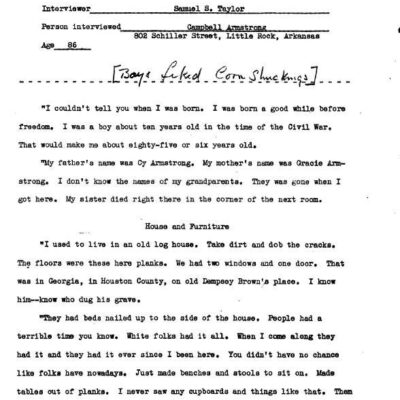
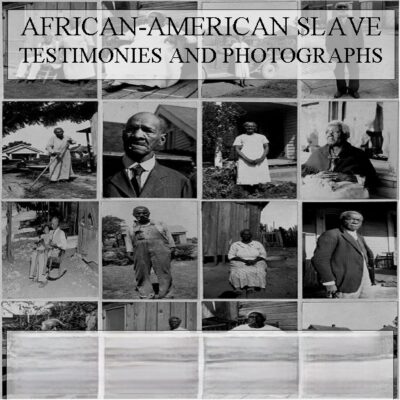
African American Slave Testimonies and Photographs
$19.50 Add to Cart -
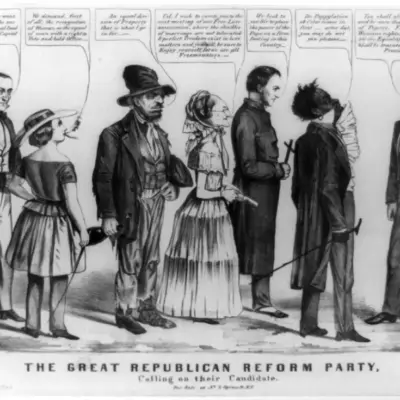
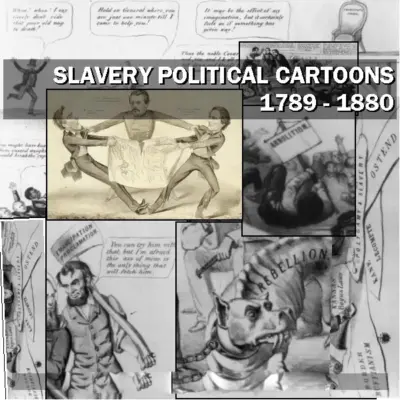
Slavery Political Cartoons: Cartoon Slavery 1789 – 1880
$19.50 Add to Cart -

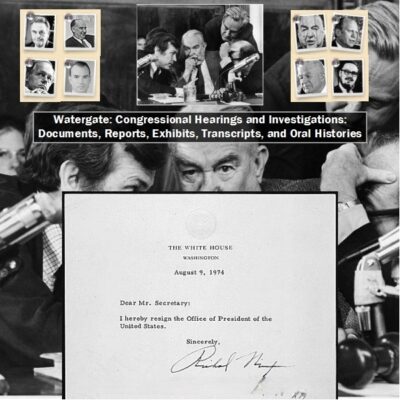
Watergate: Congressional hearings, reports, exhibits, and transcripts
$19.50 Add to Cart -

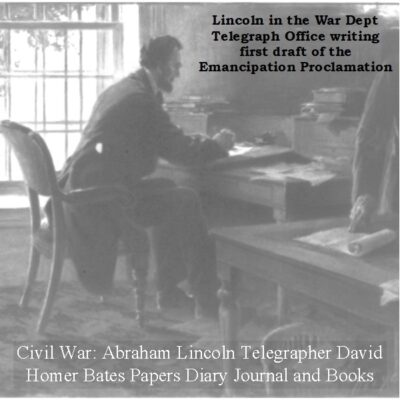
Abraham Lincoln’s Telegrapher David Homer Bates: Papers, Diary, and Books
$19.50 Add to Cart